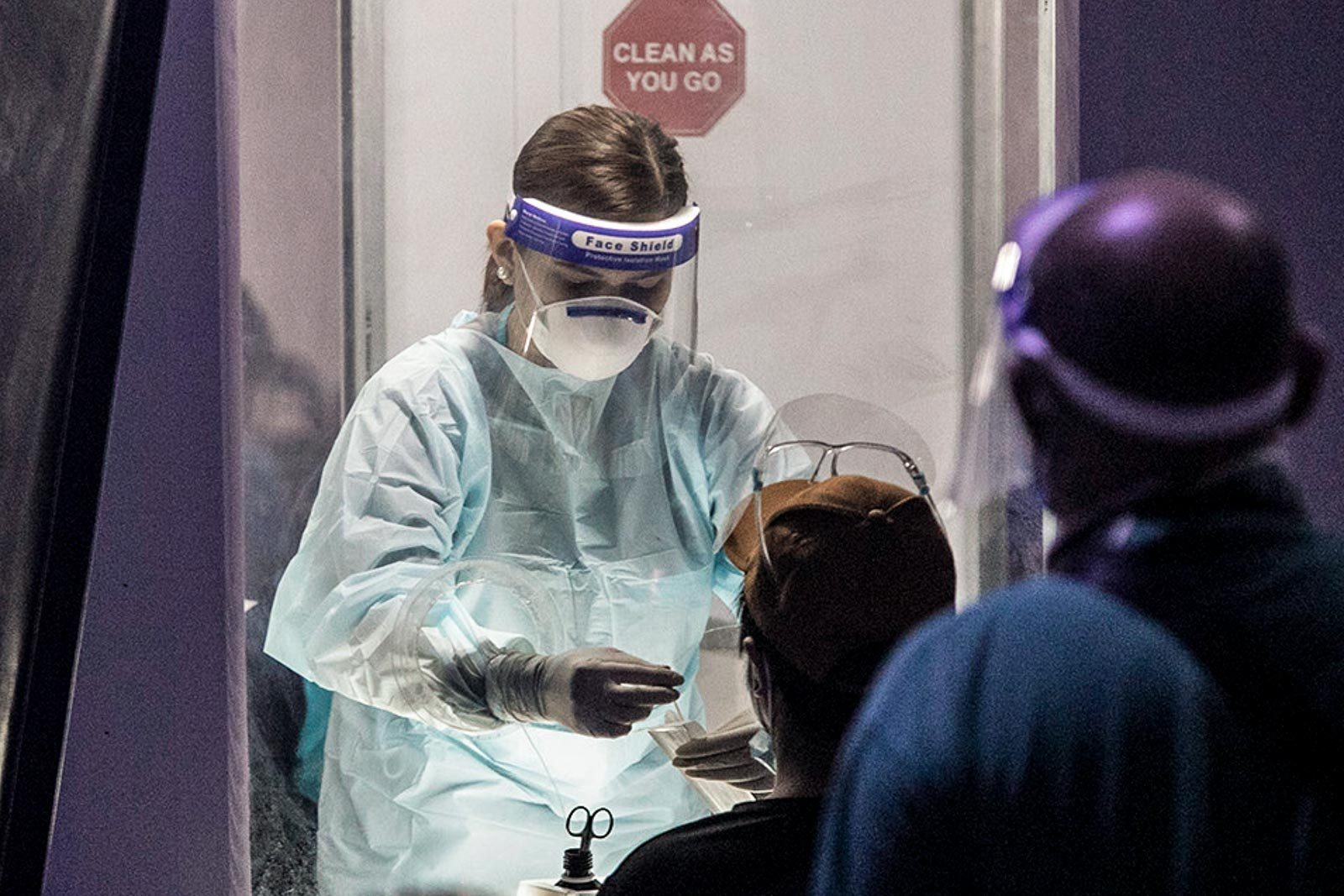SUMMARY
This is AI generated summarization, which may have errors. For context, always refer to the full article.

The number of COVID-19 cases reported daily in the Philippines has been decreasing, but the government must refrain from easing community quarantine policies especially in pandemic epicenter Metro Manila, an independent research group said in a report on Saturday, September 26.
Additional cases reported by the government daily, based on testing, averaged below 3,000 from September 16 to 23, with the reproduction number at 0.82 during the period, said Octa, a research group composed primarily of faculty members and alumni of the University of the Philippines, with contributors from the University of Santo Tomas and US-based Providence College.
The reproduction number measures a disease’s “transmission potential” or the number of people one confirmed case can infect. Maintaining the reproduction number below 1 is a positive indicator in containing the pandemic.
This reproduction number of 0.82 “affirms the downward trend in case reports,” the group said.
The country’s COVID-19 transmission number hovered above 1 until September 1, after which it decreased to just above 0.9 from September 2 to September 15. In Metro Manila, the transmission number declined from 0.86 as of September 15, to 0.74 as of September 23.
On September 6, Octa said the curve of COVID-19 transmission had begun to flatten in Metro Manila, but warned the public against complacency.
On Saturday, the group echoed the same warning as it reported the “decelerating trend” in the transmission number in Metro Manila and the rest of the Philippines.
“This positive trend is not irreversible and significant efforts have to be undertaken by all stakeholders to sustain it,” Octa said in its report.
The case doubling time in the country from March 1 to September 24 had been 12 days. In Metro Manila, it was 13 days, the group noted. To warrant easing restrictions to modified general community quarantine (MGCQ) – the most relaxed of the 4-tier scheme – the case doubling time should slow down to 28 days.
“Therefore, we recommend that the national government consider retaining the current General Community Quarantine (GCQ) status for [Metro Manila] until its regional health indicators further improve, and qualify it for the MGCQ status,” the Octa report stated.
“We caution the national government against prematurely downgrading the quarantine status in the identified high-risk areas and most especially in [Metro Manila] as this may lead to exponential growth in the number of cases and deaths apart from overwhelming our health care system. Hence, seriously compromising our collective efforts to contain the virus,” the report added.
Past data and trends indicate that prematurely downgrading Metro Manila from GCQ to MGCQ may increase the risk of a surge in COVID-19 cases in December, around Christmas, the group said.
High-risk areas – those that report more than 100 cases daily – are Bulacan, Batangas, Cavite, Laguna, Negros Occidental, and Rizal, the group said, noting a decrease in newly reported cases compared to the previous week.
Emerging hotspots – whose newly reported cases increased over a two-week period, and numbered at least 10 per million of their population – are Baguio City in Benguet, Iloilo City, Tacloban City in Leyte, Cagayan de Oro in Misamis Oriental, and Nueva Vizcaya.
In Metro Manila, the number of cases reported daily has decreased to an average of 1,200 per day, a more than 50% decline compared to 5 weeks before, Octa said. The region’s positivity rate was 10% over the past few weeks, and its hospital occupancy has gone below the critical level of 70%.
Metro Manila’s positivity rate – 10% – is still above the World Health Organization’s ideal rate of 5%, Octa said.
In Cebu province, including Cebu City, the reproduction number is 0.92, and the positivity rate is 4%, “indicating the pandemic is still under control,” the research group said.
A decreasing trend has been reported in previously reported hotspots Agusan del Norte, Capiz, Davao del Norte, Lanao del Norte, Lanao del Sur, Oriental Mindoro, and South Cotabato.
Using the current reproduction number, Octa projected that the total COVID-19 cases in the Philippines would rise to a range of 380,000 to 410,000 by October 31.
The current trajectory indicates total cases will reach 310,000 to 315,000 by September 30. “It is likely we will reach the lower range of the previous projections – a very positive sign that we are headed in the right direction,” the Octa report said.
To maintain these trajectories and prevent a resurgence in cases, the group recommended better pandemic surveillance, more effective strategies for physical distancing, and compliance with health protocols to “augment” the implementation of community quarantine across the country.
There is an urgent need to scale up the health system’s capacity, the group said.
Octa also recommended carefully monitoring hospital capacities, which should be expanded in Metro Manila and other COVID-19 hotspots in the country. It urged private establishments to step up efforts to ensure health safety in workplaces, including testing and contact tracing if necessary.
On Saturday, the Philippines reported a total of 301,256 COVID-19 cases, with 5,284 deaths and 232,906 recoveries. – Rappler.com
Editor’s Note: An earlier version of this story included a line, quoting Octa research group, about the reproduction number being “still above the World Health Organization’s ideal rate of 5%.” Octa group said they made a mistake, as this qualifier should refer to the positivity rate, as this story now reflects.
Add a comment
How does this make you feel?
There are no comments yet. Add your comment to start the conversation.